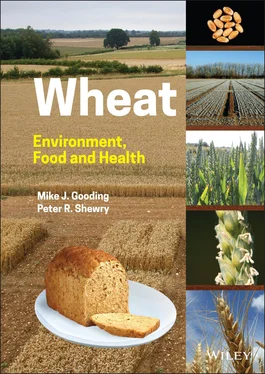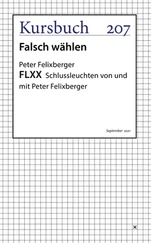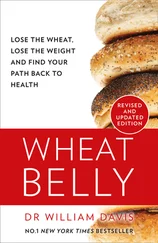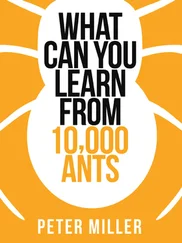1 ...6 7 8 10 11 12 ...21 
Figure 1.9 The leaf production phase of wheat. Boxed numerals are the decimal growth stage scores from Table 1.4.
The production of tillers (DGS = 2 n ) allows the plant to spread and increase its canopy size more than would be possible through just increasing the number of leaves on the main stem. Tillers originate in the axils of the leaf nodes and rise between the leaf sheaths. Tillers are counted as such when they have their own fully unfolded leaf ( Figure 1.10). Each tiller has the potential to produce an ear, but the plant will often produce more tillers than survive to maturity. Tillering is particularly important when inter‐plant competition is low. This can arise, for example, when seedling establishment has been poor due to difficult seed bed conditions and/or when seed of low vigour has been used. Additionally, tillering can help compensate when neighbouring stems or plants have been lost through frost or hail damage, or through herbivory by insects and mammals.
The seminal roots continue to develop during the vegetative phase, but further adventitious (or nodal) roots start to develop about one to two months after germination. The adventitious roots derive from the coleoptile node or lower nodes of the main stem and tillers. They generally overtake the seminal roots and can occupy over 90–95% of the total root volume of a fully grown crop.
The reproductive stages commence when the stem apex or growing point starts producing the structures of the ear (or spike ). The timing of this transition is strongly dependent on wheat genotype and the environment. Of particular relevance are the interactions between genetic factors, temperature, and day length (or photoperiod), i.e. cultivars vary greatly in their need to pass through a cold period (i.e. to become vernalised ), and for days to lengthen. These interactions are detailed in Chapter 4, but for now it suffices to recognise that those cultivars that have a significant requirement to pass through a cold period for timely transition to the reproductive phase and hence to maturation are classed as winter wheats (as in Figure 1.6, Table 1.3). Those that have little such requirement are classed as spring wheats. Facultative wheats are intermediate between winter and spring wheats in their requirement for vernalization (Braun and Sãulescu 2002). Those cultivars that do or do not have a strong requirement for days to lengthen for timely development are respectively classed as day length sensitive and day length insensitive cultivars ( Table 1.3).
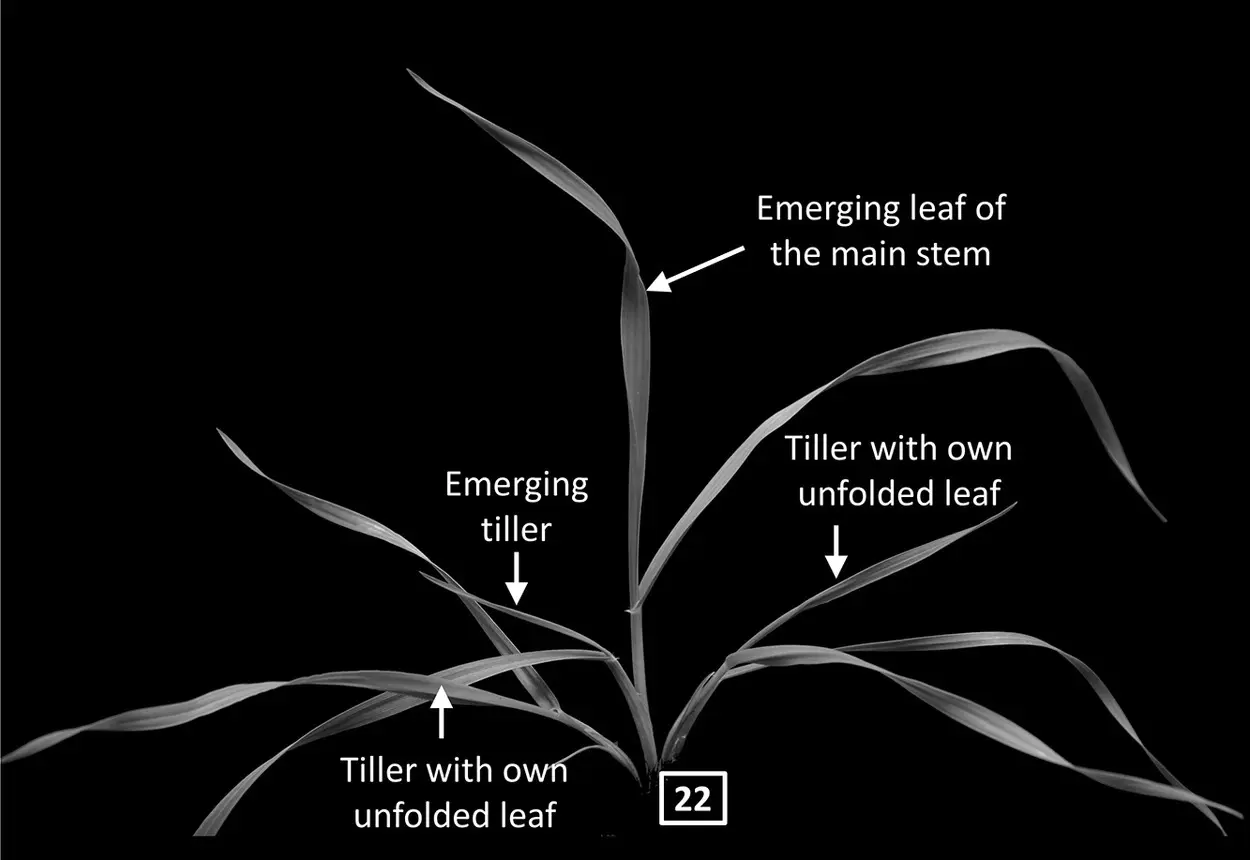
Figure 1.10 The tiller production phase of wheat. Boxed numeral is the decimal growth stage score from Table 1.4.
The first signs of the transition from the vegetative to the reproductive phase are that the stem apex elongates to 0.3 mm with the appearance of primordia as single ridges. At this stage, the stem apex is still close to ground level. The buds in the axils of the apex ridges are spikelet primordia and, with their leaf initials form double ridges as the developing spike elongates to between 0.8 and 1 mm ( Figure 1.7). In broad terms, double ridges occur as the plants take on a more upright appearance as leaf sheaths elongate and pass through the pseudostem erect growth stage ( Figure 1.11) (Barber et al. 2015).
The structures of the ear develop as it is simultaneously elevated through the leaf sheaths of the canopy by the lengthening stem. Stem elongation is evidenced by the detection of nodes behind the rising apex ( Figure 1.11). As the spike continues to elongate, the central spikelets swell while additional double ridges are formed acropetally (upwards) until the terminal spikelet is formed at the apex. By this time, the developing ear is usually 10–30 mm above the base (or crown) of the plant, and between one or two nodes are detectable (DGS31–32; Figure 1.7; Barber et al. 2015). The spikelets continue to differentiate and develop scaly tissues (glume, lemma, palea) and potential sites for grain formation (florets) ( Figure 1.12). Floret initiation continues until about the time that the last leaf (the flag leaf) emerges and unfolds (DGS37–39; Figure 1.11). Between 7 and 11 florets may be initiated in each spikelet but, as with tillers, many more florets are initiated than develop to maturation with a grain.
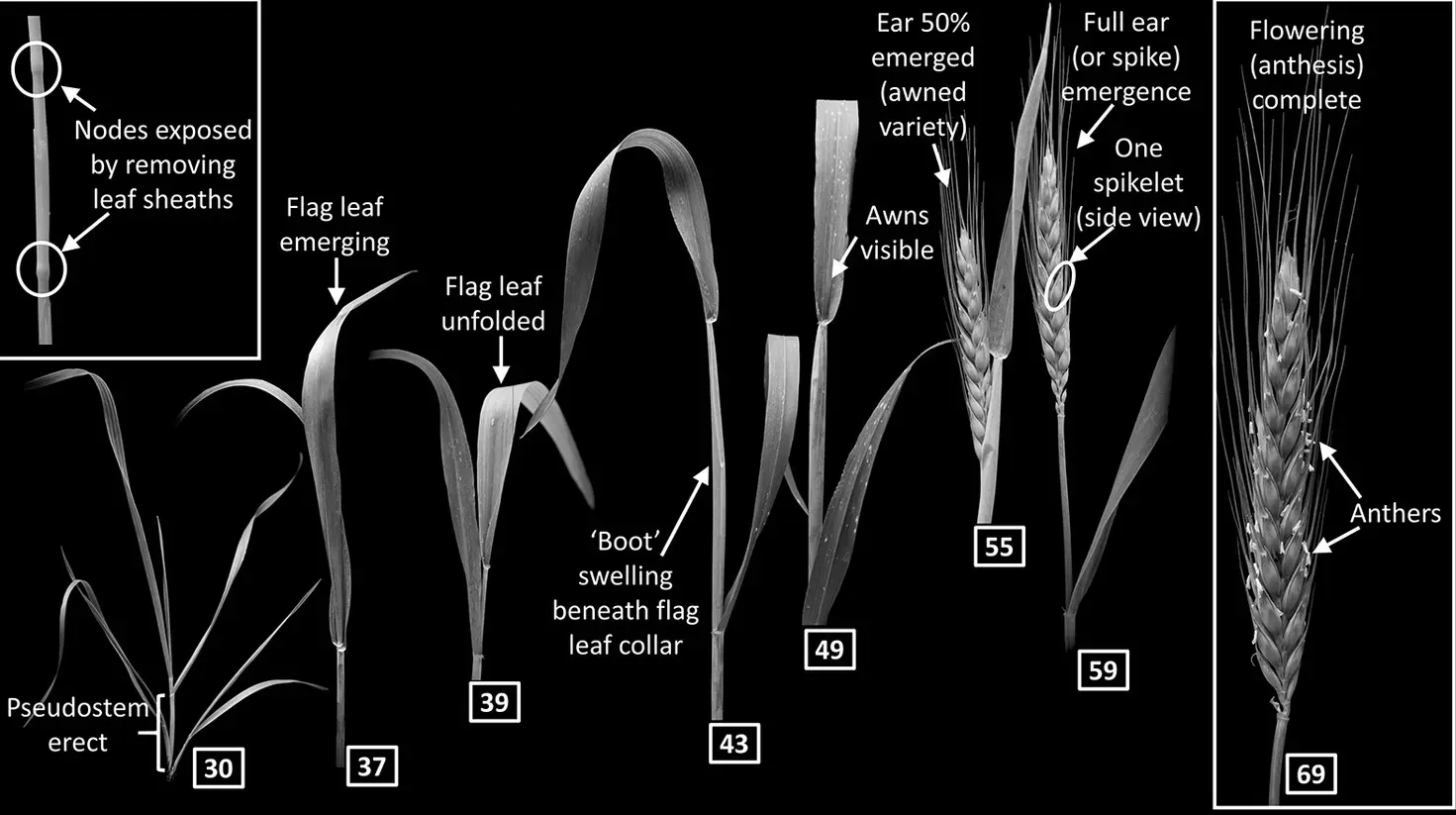
Figure 1.11 Stem extension, booting, ear emergence, and anthesis of wheat. Boxed numerals are the decimal growth stage scores from Table 1.4.
1.2.2.2 Booting and Ear Emergence
Once the flag leaf has emerged, the swelling of the developing ears within the flag leaf sheath becomes visible as a boot (DGS 40–49; Figure 1.11). It is approximately during this booting phase that cell division by meiosis occurs to produce the male (pollen) and female (ovule) gametes of the flowers. Booting is soon followed by the emergence of the ear above the flag leaf (DGS 50–59; Figure 1.11). At ear emergence, the structure and colour of the ears can be used to distinguish wheat cultivars. For example, the length of the awns extending from the lemmas ( Figure 1.12) can either be short (awnless cultivars) or long (awned cultivars), as compared in Figure 1.13. Awns are a wild‐type adaptation that would have aided seed dispersal. However, there appears to be a small yield advantage for awned cultivars in warmer areas, and particularly for preventing excessive grain shrivelling in dry conditions (Rebetzke et al. 2016).
Anthesis (flowering; DGS 60–69; Figure 1.11) usually occurs between three and eight days after ear emergence, starting in the lower florets of the central spikelets. Most flowering throughout the spike is often completed within two to four days, although late flowering in distal spikelets and florets can extend this period to seven days (Percival 1921). Wheat is mostly self‐pollinated, but some outcrossing is possible, particularly in genotypes with more open florets and when plants are grown close together. However, cross‐pollination is limited because wheat pollen is heavy and short lived.
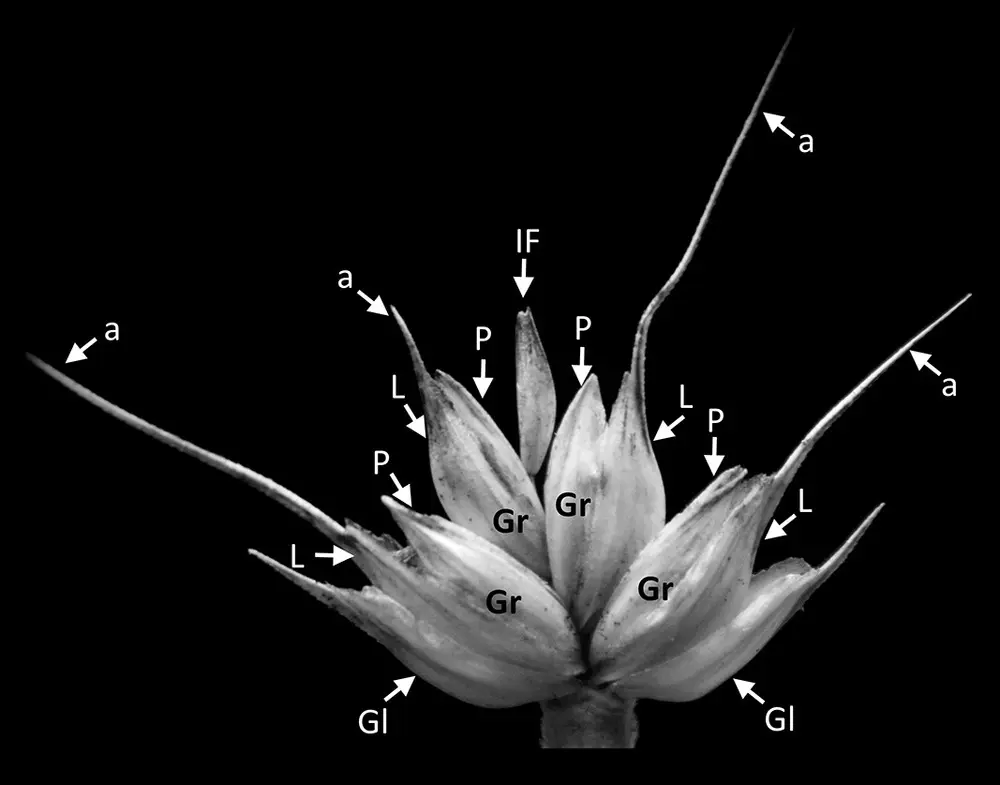
Figure 1.12 Structures of a single mature spikelet. Gl = Glume; L = Lemma; P = Palea; Gr = Site of grain, obscured by lemma and palea; a = awn; IF = Infertile floret.
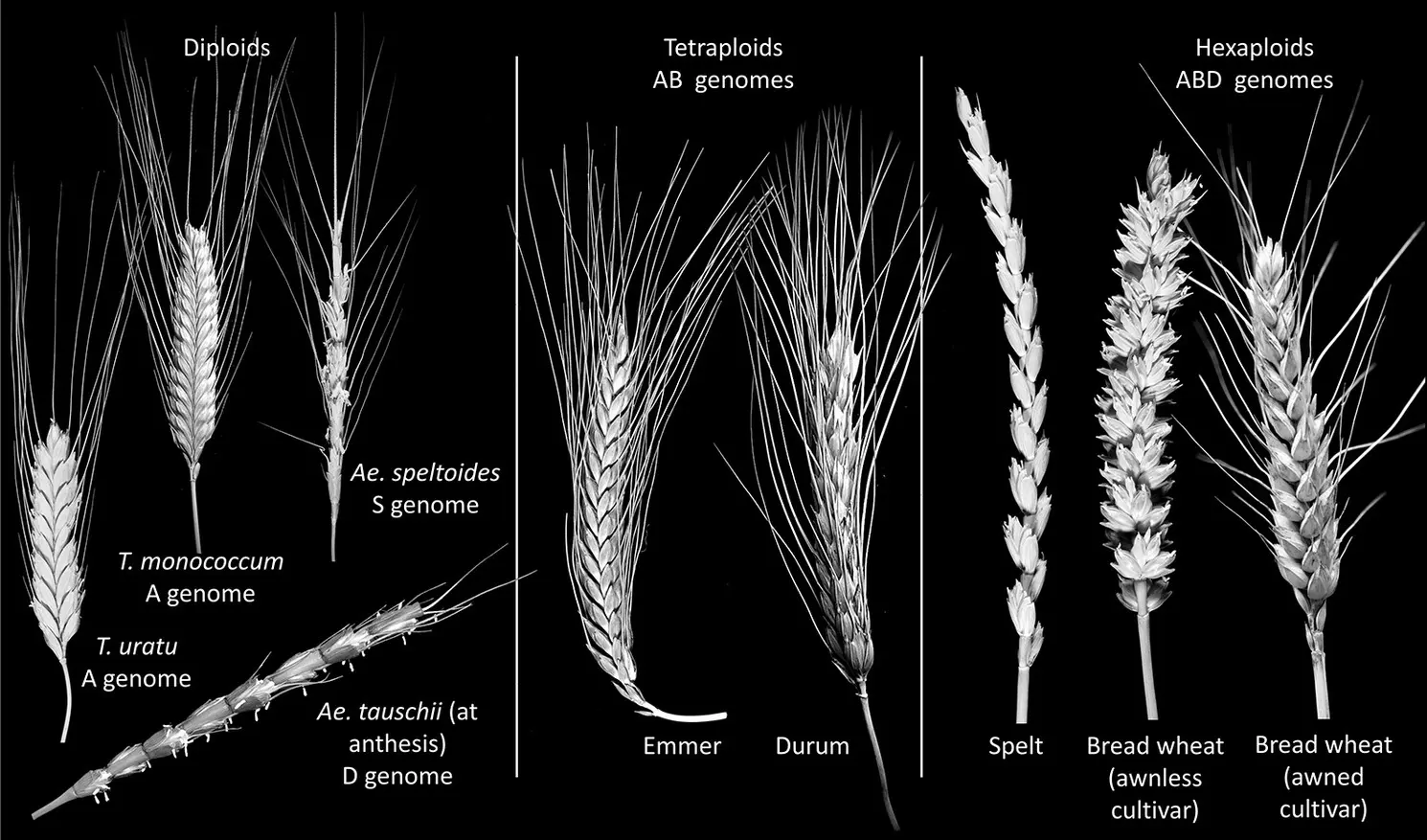
Figure 1.13 Ears (spikes) of wheats and their relatives.
After fertilization, the developing caryopses ( grain ) expand rapidly with net ingress of water. When squeezed, the immature grains first exude a clear watery droplet, i.e. signifying the watery‐ripe growth stage (DGS = 71). Later, the liquid becomes milky as starch is accumulated (DGS = 73). A wet mass, surrounded by milky liquid, denotes medium milk (DGS = 75), whereas late milk occurs when the grain contents are wet and sticky (Tottman 1987). The growth stage scores move from milk development to dough development when no liquid droplet can be squeezed from the grain. At early dough (DGS = 83) the grain contents are soft and cheesy. At soft dough the grain contents cannot be easily squeezed out, but a fingernail impression into the dorsal side quickly disappears (DGS = 85). This stage is broadly coincident with the senescence of the flag leaf and with the maximum accumulation of dry matter in the grain ( physiological maturity ; Barber et al. 2015). Grain moisture content (w/w) is often between 50 and 40% at this stage. Later stages describe the net loss of water from the grain as harvest is approached ( harvest maturity ). At the hard dough stage (DGS = 87) a fingernail impression is retained, whereas by DGS = 92 the caryopsis is hard and cannot be dented. Further details of grain development, particularly as they pertain to grain quality, are given in Chapter 7.
Читать дальше
